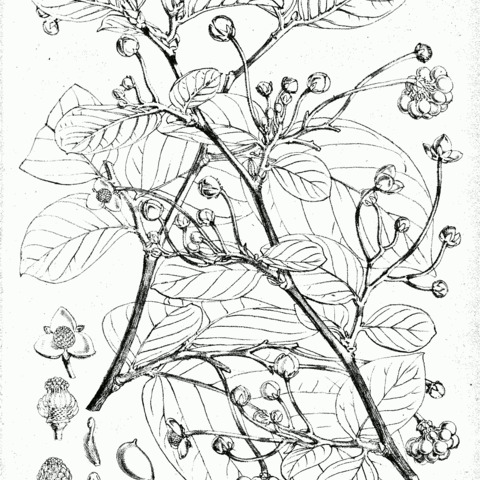A tree. It grows 10 m high. The young branches have a coating. The leaves are 12-30 cm long by 7-16 cm wide. They are broadly oval. The young leaves have soft hairs on both sides. The leaf stalk is stout and 2-8 mm long. The plants are separately male and female. The flower and fruit stalk is 6-25 mm long. The flowers are in groups of 3-6 near the axils of leaves or at the ends of branches. The fruit are 1-2 cm across.

